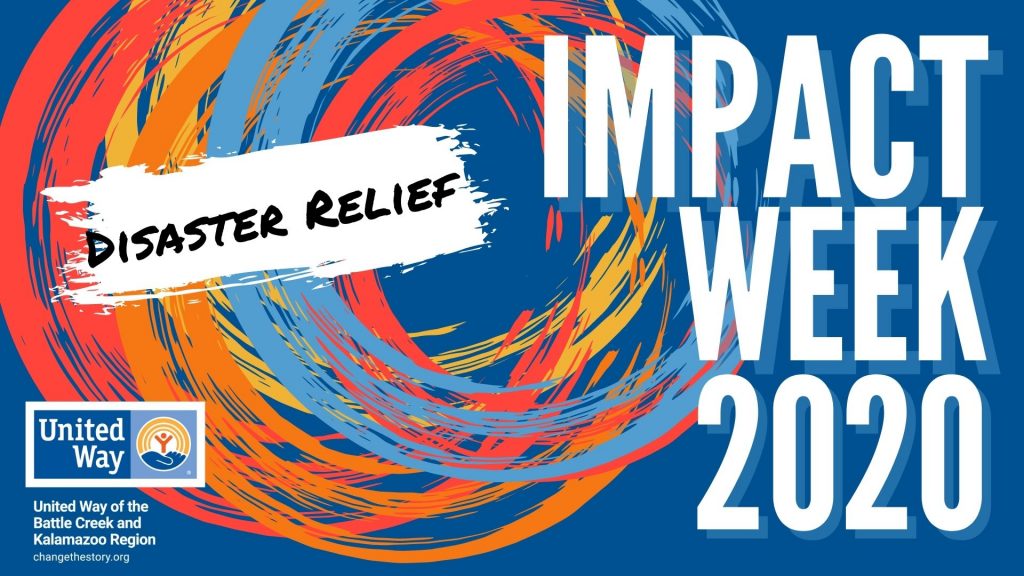Preparation Softens Pandemic Blow, Strengthens Community
November 30, 2020

Many disasters have a common trait that leads to the greatest tragedies: lack of preparation.
United Way and its community partners have a solid track record of coming together to respond quickly when a crisis strikes — historic flooding in 2018, mass shootings in 2016, violent storms in 2011 and the economic downturn in 2009, to name a few. Realizing the need to be ready for the next one, last year United Way BCKR along with public and private supporters seeded the Disaster Relief Fund.
Then came COVID-19.
“We activated the fund in March after the first executive orders,” said Alyssa Stewart, Vice President of Impact & Engagement. “With public schools ordered closed, access to food was an immediate concern. Many children from low-income families lost a key source of quality meals. Pretty quickly we saw rising demand for shelter and basic living needs. We also saw nonprofits that are part of the social safety net start struggling to keep up with the demand, largely because their own operations were affected.”
The community took notice and took part. The Kalamazoo Community Foundation, which maintains a Community Urgent Relief Fund, partnered with United Way to respond to the growing need. The W.K. Kellogg Foundation, Battle Creek Community Foundation, Stryker, Kellogg Company, Harold & Grace Upjohn Foundation, Binda Foundation, Miller Foundation and many more, plus hundreds of individual donors, lifted the fund to $1.73 million that in turn went to dozens of local agencies. See the full list here.
Preparation and response in the face of the pandemic eased some of its burden in crucial ways.
“In terms of need, three themes emerged: collaboration, access and neighborhood connections,” explained Laurel Clark, Associate Director of Community Impact.
Collaboration
Working together to solve problems is a hallmark of our regional community—and no less so during the height of COVID-19. Disaster Relief Funds were able to bring together the resources of expertise of diverse groups to help those in need.
The Fund’s effectiveness itself depended on collaboration. United Way and the Kalamazoo Community Foundation, through its Community Urgent Relief Fund, worked together to identify and respond to specific calls for help related to food access, basic household needs, children’s needs, shelter and supporting social services. Both organizations worked alongside the Kalamazoo County Response Consortium and Gryphon Place to address Kalamazoo area needs, and United Way partnered with the Battle Creek Response Consortium to tackle needs in that community. Here are other examples:
- In Battle Creek, Haven of Rest Ministries, SHARE Center and the City of Battle Creek partnered to open, supply and staff Full Blast Recreation Center as an emergency homeless shelter. This relieved the burden on other shelters struggling to meet tighter occupancy limits and social distancing guidelines.
- In Kalamazoo, a similar collaboration involving Ministry With Community, Integrated Services of Kalamazoo, Kalamazoo Gospel Ministries, Housing Resources Inc. and Kalamazoo County Health and Community Services provided day and night shelter options and support services for homeless individuals.
- Regionally, Disaster Relief Fund monies helped support an isolation and quarantine site to minimize the risk of coronavirus spread among vulnerable groups and families.
Access
Access-related needs included technology, such as internet service for students learning from home or families trying to connect with vital resources; ease and ability of navigating the services and supports available; financial relief services, particularly those based on immigration status; and availability of coronavirus information for non-English and English-as-second-language speakers. Among the accomplishments:
- In Battle Creek, the Burma Center used Disaster Relief Fund dollars to translate information on available resources, services and health care for Burmese residents, who number about 1,800.
- In Kalamazoo, Goodwill Industries of Southwestern Michigan created a program to help people navigate the unemployment process and secure other basic services.
- Regionally, Disability Network Southwest Michigan added technology to help their clients access services.
In Battle Creek, digital access was a particular challenge, Clark said. Not every need was met during the height of demand. However, United Way is now working with a digital equity task force with the goal of tackling that need more effectively in the future.
Neighborhood Connections
Between lockdowns, quarantines and limits on gatherings, the pandemic left many people feeling isolated. Disaster Relief Funds supported organizations that worked to reconnect individuals and neighborhoods while making sure their needs were met. Among them:
- RISE (Reintegration to Support and Empower), a grassroots group that distributed food in Washington Heights and other Battle Creek neighborhoods.
- Mothers of Hope, which provided laundry assistance for isolated families in Kalamazoo’s Northside neighborhood with funding from both United Way and the Kalamazoo Community Foundation.
- Women’s Co-op, a women-run, women-focused grassroots network that addressed an array of household needs among low-income, female-led families in greater Battle Creek.
Having fully invested its resources, the Disaster Relief Fund went into standby mode in August. Stewart said a number of donors helped to replenish the Fund, and earlier this month, both United Way and Kalamazoo Community Foundation launched a second activation of their crisis relief funds. Meanwhile, United Way BCKR also continues to support those communities and organizations still facing challenges from the pandemic—providing resources for homeless individuals through the Continuum of Care in Kalamazoo, offering flexibility on grants to partner agencies as they shift focus to pandemic needs, and accelerating with partners the work of Catalyzing Community Giving to engage communities of color in Battle Creek.
“As we focus on recovery and rebuilding, it’s also a great help to have resources on hand to respond quickly, especially for the most vulnerable in our region,” said Stewart.
![]()
Posted in Basic Needs, BC/Kzoo
